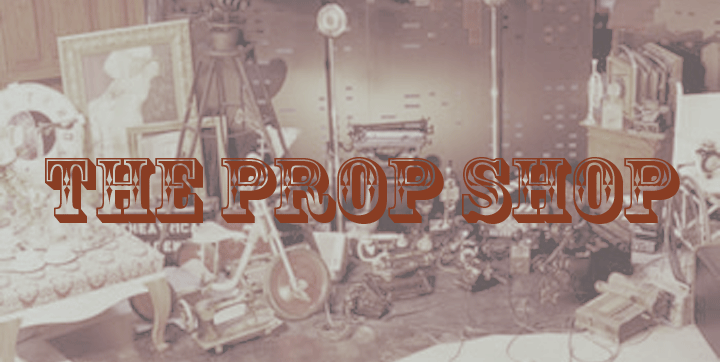
So, the director just handed me a script and said "Make a prop list", now what? Well first off let's define props shall we? A prop in my book is anything used on stage that is easily picked up and carried.
There are several subcategories: personal props are things that "belong" to one actor (a checkbook or pocket watch), set props usually have a home on the set are used by actors and returned to their home (telephone), set decoration props are things such as hanging pictures which fall in a grey area between sets and props but may be managed by the props master.
Now that we know what a prop is, how do we go about compiling the list? First of all check to see if the acting edition you are using contains a prop list, these are usually found in an appendix at the back of the printed script and can be very useful. (note image above: first page of properties list for Witness for the prosecution)
If not, never fear it really isn't as daunting as it seems. Simply begin at the beginning and look for anything that any actor uses or directly refers to in the script. Write all of these down, you will make changes later. Once you have this general list go back to the director and ask him or her to peruse your list and tell you which items will and will not be used.
Almost invariably there will be things on this list that the director will not use. Also there may be additions of items not found in the list or in the script . These things usually have to do with specific things the director is trying to get across in interpretation or will be used in bits of business specific to this production.
If you have access to a computer it might be good idea to compile your list using a word processor. Or, if you have the time to import your script into
Celtx you can combine the two into a searchable database including images! With a didgital copy in your computer you have easy access to printing additional copies, a copy will be saved in a safe place and you can use it to email requests for items etc.
Once you have a list it is time to start pulling props. Most theatre companies will have a prop closet or trunk that they have stored various items in. Start here, pulling anything you think might work, checking off items as they are found.
Next move on to the borrowing phase. Ask around among cast and crew for items you need. If you have connections with other theatres or schools in your community ask if they might have any of the items you need and be willing to loan them to you.
Once you have exhausted your stock and borrowed what is readily available you probably will have made a pretty good dent. Next comes
building or buying what you still need. We have already posted a wonderful article on this subject, for more
click here.
Once all of your props have been assembled you can complete your list. You might want to create a chart showing which prop gets used when and by whom!
If you have the ability to use a digital camera you can include images which are very helpful in a hurry as not everyone will understand what galoshes are.
Make sure that each actor understands their responsibility to get their props from and return their props to the
prop table. This cuts down on the wear and tear on your crew. Now you know, so grab that script and start the list!















